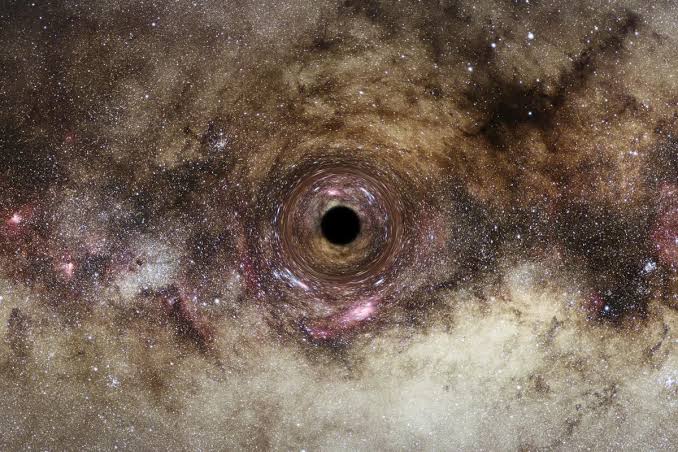Black holes are enigmatic cosmic objects whose gravity is so intense that not even light can flee from them. Astronomers look for them by observing how stars and galaxies behave and how their gravitational effects on nearby objects differ from those anticipated by Einstein’s general relativity theory.
Black holes are found and studied using methods like astrometry and light distortion measurement.
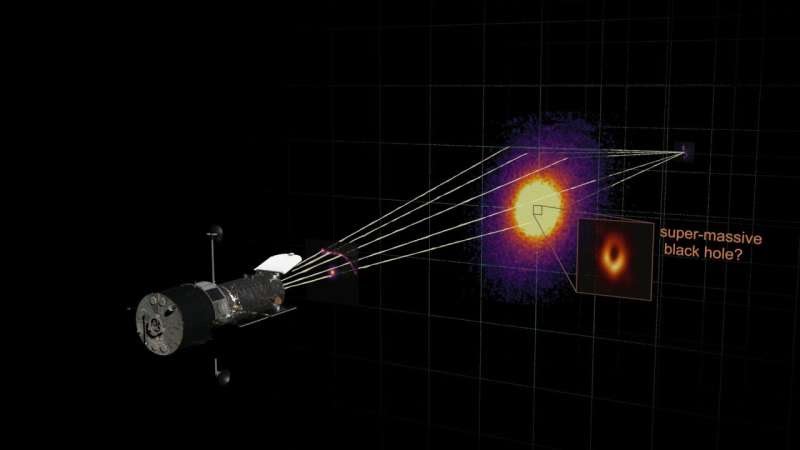
In a recent, Using the phenomenon of gravitational lensing, a team of astronomers has recently made a remarkable discovery – they have found one of the largest black holes ever detected.
The Discovery:
Durham University, UK, has led a team of astronomers who have recently made this astounding discovery utilizing the phenomenon of gravitational lensing.
By carefully analyzing how light is bent by a black hole within a galaxy located hundreds of millions of light years away, the team used supercomputer simulations on the DiRAC HPC facility to uncover an ultramassive black hole.
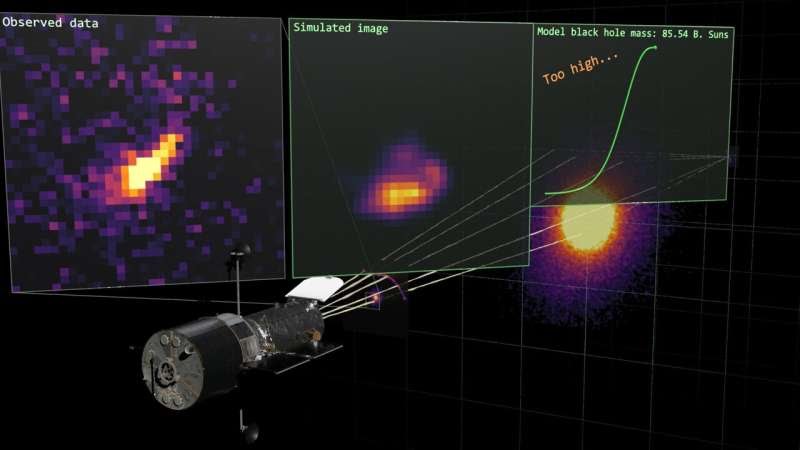
This rare object, which is over 30 billion times the mass of our sun, was found in the foreground galaxy through the simulation of light traveling through the universe hundreds of thousands of times. This groundbreaking technique, which is the first of its kind to discover a black hole, opens up new avenues of research into the mysteries of the universe and will help us to better understand these elusive objects.
The researchers discovered that including an ultramassive black hole in their simulations produced a path of light that matched the real images captured by the Hubble Space Telescope.
The study’s principal investigator, Dr. James Nightingale of Durham University’s Department of Physics, claims that the black hole they found is among the biggest ever identified, weighing roughly 30 billion times as much as the sun. This significant discovery is especially exciting because it is at the theoretical maximum size that black holes can grow to.
Related: What Will Happen If Sun Ever Collided With a Black Hole?
The Phenomenon-Gravitational Lensing:
The gravity of a large object, like a foreground galaxy, can warp and distort the light from a more distant background galaxy in a process known as gravitational lensing. As a consequence, the backdrop galaxy is visible multiple times and takes the form of distorted and elongated shapes surrounding the foreground object.
Astronomers are now able to study distant galaxies that would otherwise be too faint and small to see thanks to this phenomenon, which functions as a kind of natural magnifying lens. Researchers can deduce details about the mass and dispersion of dark matter in the lensing galaxy as well as the characteristics of the background galaxy, such as its size, shape, and luminosity, by examining the distorted shapes and patterns in the lensed images.
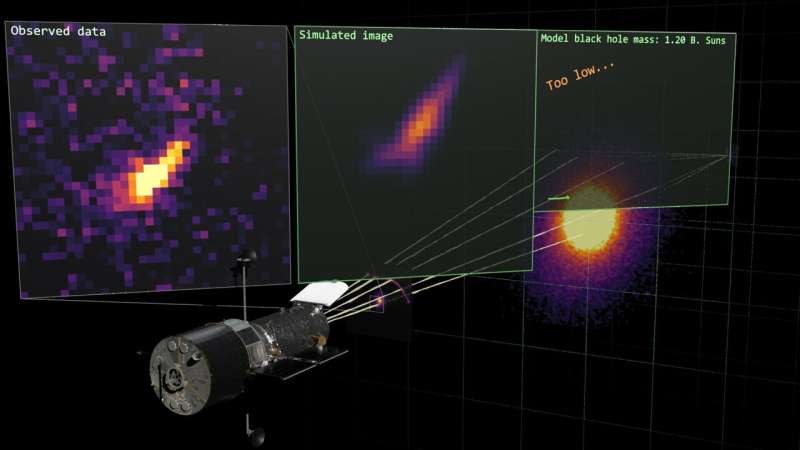
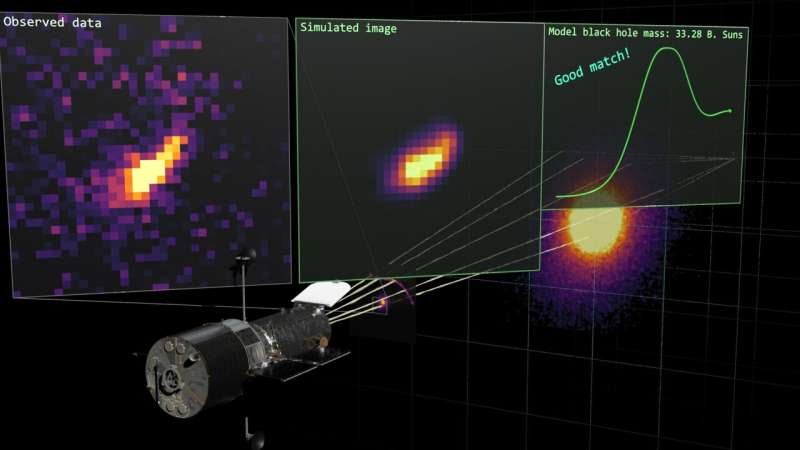
The majority of the largest black holes that we are aware of are presently in an active phase, claims Dr. Nightingale. As matter is drawn in close to the black hole during this stage, it heats up and emits various kinds of energy, including light, X-rays, and other radiation.
Gravitational lensing offers a chance to study inactive black holes, which are presently difficult to study in distant galaxies. Using this method, we might be able to find more black holes outside our local universe and learn more about how these mysterious objects developed in previous cosmic eras.
The Use of Latest Technology
In a joint effort with the Max Planck Institute in Germany, the most recent research suggests an exciting chance for astronomers to discover a number of undiscovered inactive and ultramassive black holes. Researchers could learn more about how these cosmic behemoths expanded to such enormous proportions by doing this.
The intriguing event that led to this finding occurred in 2004, when Professor Alastair Edge, a coworker at Durham University, came across a massive gravitational lens arc while looking through images from a galaxy survey. This arc’s existence pointed to the gravitational lensing phenomenon, which prompted further research and, ultimately, to the discovery of an inactive, ultramassive black hole.
The enigmatic ultramassive black hole was further investigated by Dr. Nightingale and his crew using the most recent technology, looking back 19 years after Professor Alastair Edge’s original discovery. They were able to better comprehend this cosmic phenomenon by utilising high-resolution images from the Hubble telescope operated by NASA and the DiRAC COSMA8 supercomputer facilities at Durham University.
The team is confident that their finds will open the door to additional research into the mysteries of black holes and pave the way for new discoveries in the future. Astronomers will be able to research even further away black holes and learn more about their size and composition with the help of upcoming large-scale telescopes.
Conclusion:
Black hole discovery and detection are of utmost importance for space travel. It enables researchers to dig further into the universe’s evolution. Understanding how black holes function can help researchers better understand how galaxies develop and change over time. Researchers can also understand the effects black holes have on their environment thanks to this.
Black holes are fascinating objects that push the limits of our current knowledge of physics, aside from their useful applications. The discovery of black holes offers fresh chances to try and improve our theories. It represents a significant stride forward in our quest to understand the secrets of the universe and moves us one step closer to doing so.
